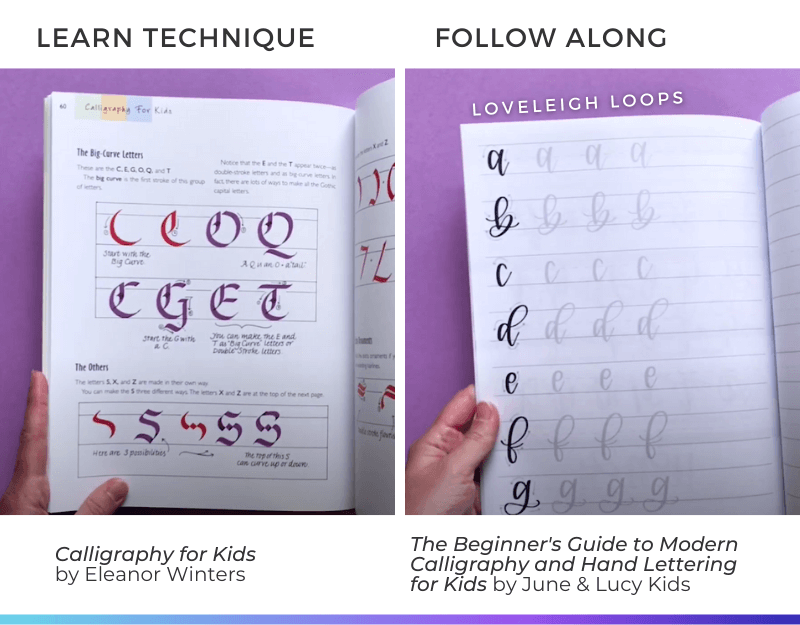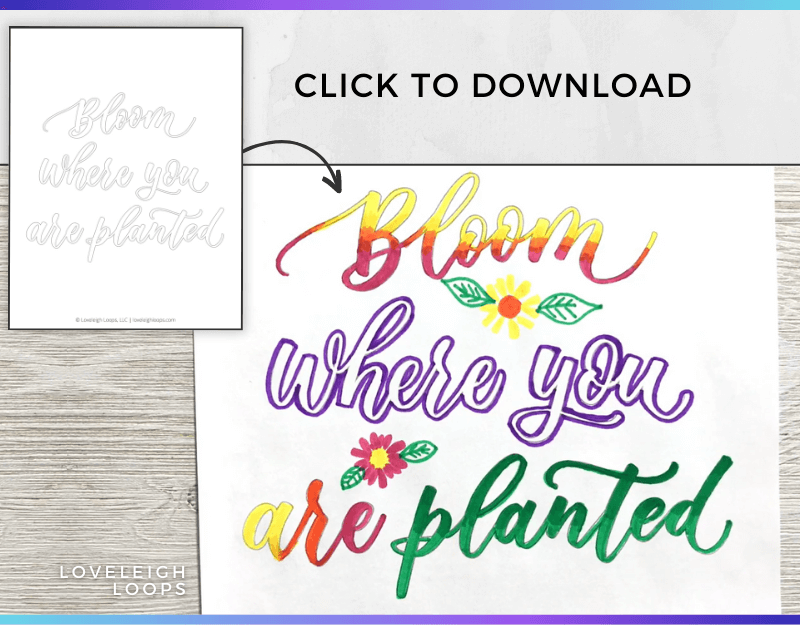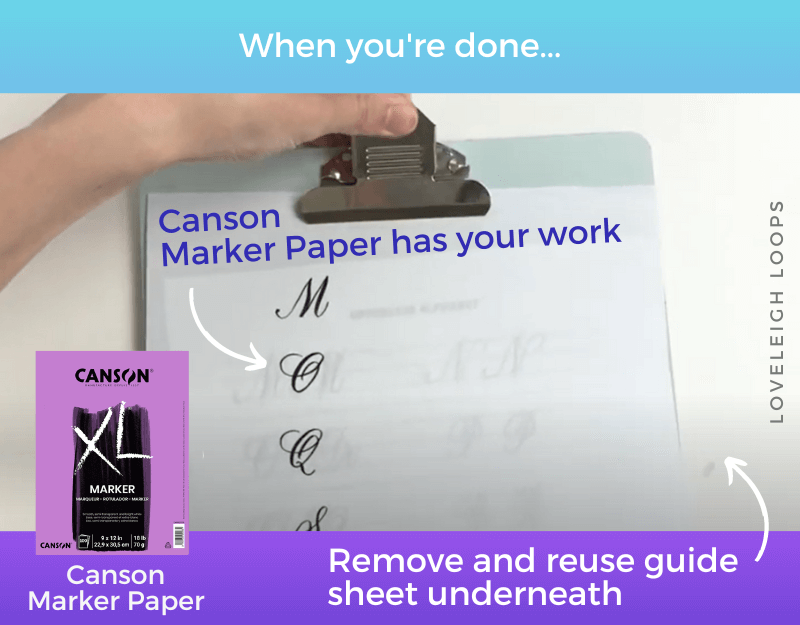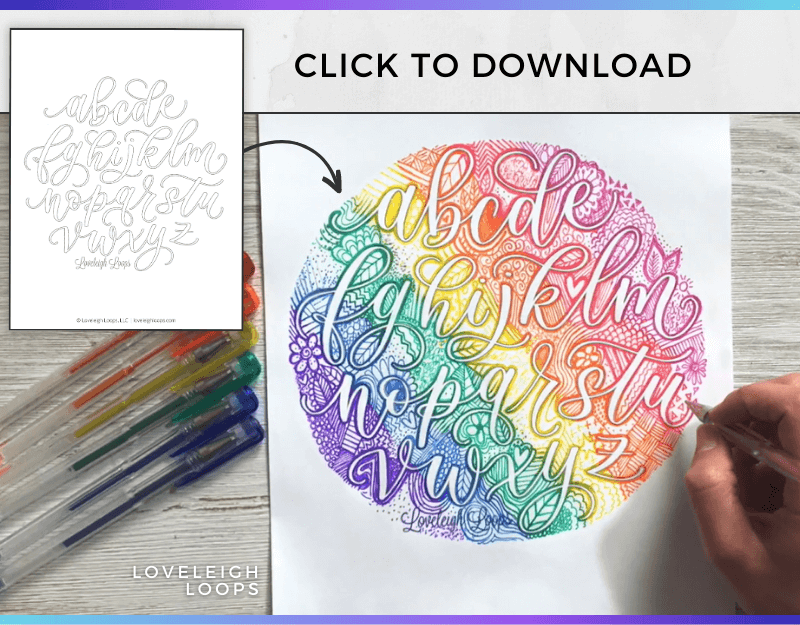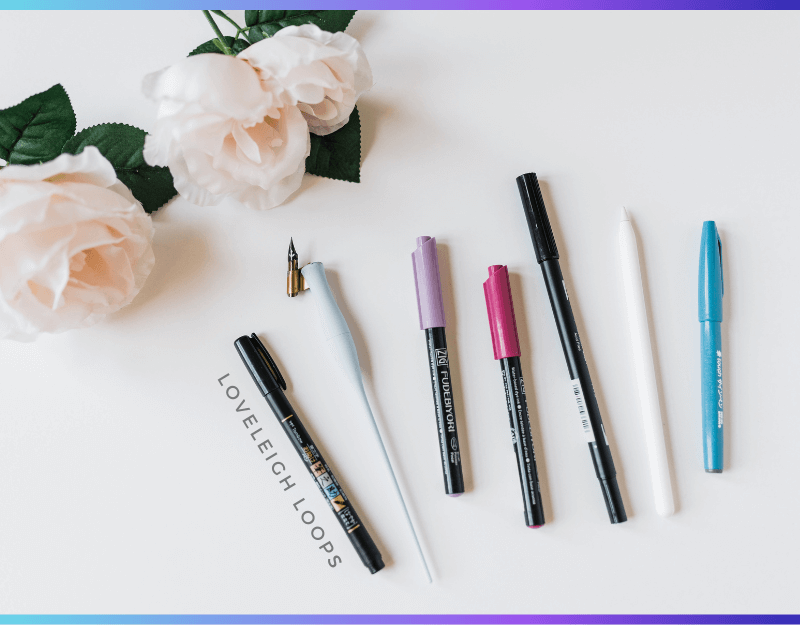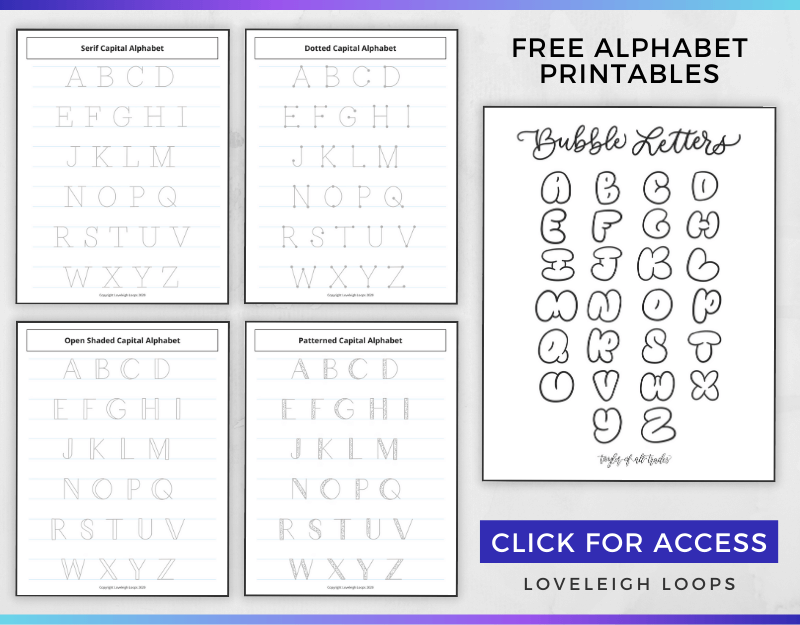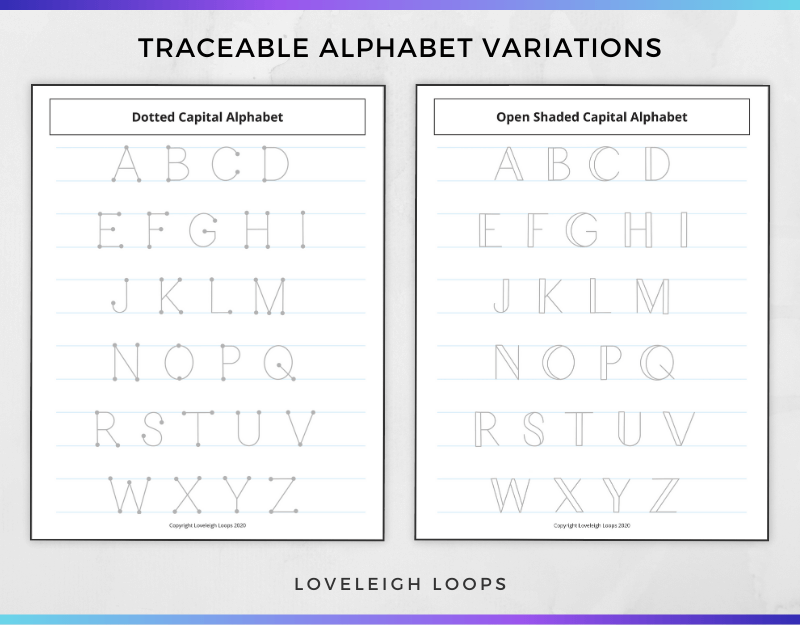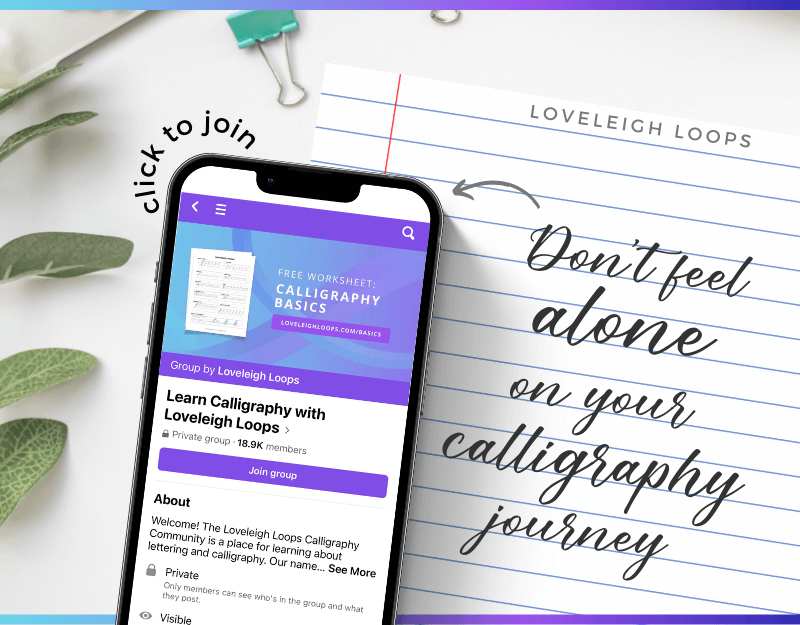Calligraphy For Kids: 3 Free Ideas To Try
When you're doing calligraphy, do your kids ever ask questions about what you're doing? Or maybe you're brand new to lettering yourself, but there's an aspiring young calligrapher in your life asking to try their hand at this ancient practice?
Let's face it: with colorful brush pens, nibs and ink, lettering comes with a lot of things that present an irresistible pull to the younger members of your family!
While the subject of lettering might just seem fun and colorful, it actually provides tangible benefits! The lettering process helps kids...
Explore color theory when choosing colors close together on the color wheel
Practice motor skills with pressure control
Improve handwriting, which is a lifelong skill
Experience repetition and improvement
Exercise creativity
Calligraphy for kids isn't as intimidating as it seems, and you don't need to become a lettering master yourself before you're ready to try this activity with the interested kids in your life. Today we'll review popular ways to get children involved in calligraphy and give you prompts that you can try right now to introduce kids to this incredible craft.
Table of Contents
Pin it for later! ↓
What About Calligraphy Books Or Classes?
Calligraphy for kids comes in many different educational packages. Parents and teachers can introduce the basics of calligraphy in many different ways, ranging from free content online (like this article, or free calligraphy practice sheets!) to more formal learning materials like classes or books.
Calligraphy Books
Most bookstores sell the odd book on lettering or penmanship for kids. Authors like Eleanor Winters, Jade Scarlett and Sally Sanders have written book options for children of all ages, and they all present unique learning opportunities:
Beginner Calligraphy Workbook for Kids by Jade Scarlett
Calligraphy for Kids by Eleanor Winters
Modern Calligraphy for Kids by Sally Sanders
What works best for the children in your life will come down to their interest level and enthusiasm. Books take very different approaches:
Some of these books contain step-by-step instructions and plenty of examples to get children hooked on the fundamentals of beautiful writing.
Others focus on simply getting kids to write without worrying about strict or specific execution.
Side-by-side comparison of 2 different approaches to learning calligraphy through books
Some children will enjoy learning about the history of calligraphy, while others will want to dive directly into picking out their gel pen colors.
You can explore more book options in our review of popular lettering books: Calligraphy Books Guide.
Pro tip: You can borrow lettering books from your local library! Just use Canson Marker Paper to trace the exercises and then you can return the books when you're done. Another free option is to use our printable practice sheets here. These worksheets are special because they were designed by our Loveleigh Loops community for kids to practice creative lettering styles:
Instead of committing to a book right away, you can also use our free creative lettering printables!
Calligraphy Classes
A calligraphy class at your local library, community center or art club is a great way to introduce kids to calligraphy.
Local courses offer unique benefits. They have the opportunity to...
Make friends
Try new supplies
Introduce kids to different styles and ability levels
A snapshot of one of our 2017 workshops!
We (Jillian and Jordan) are big advocates for getting kids involved in calligraphy classes because that's exactly how our journeys with calligraphy began.
When we were 11, we took our first calligraphy class while on a family vacation. Instead of spending every waking minute running around the beach, we were content in the art studio, entranced by what our calligraphy pens could do and all of the alphabet styles to practice.
Then in 2017, we began teaching in-person workshops. We love the magic that happens with you meet other people who share your excitement for lettering.
After moving full circle from students to teachers, we can honestly say that there's no better way to explore the joy of calligraphy than through a course, whether it's in person or an online calligraphy class.
We think that calligraphy for kids is so important that we have an entire free online course called Creative Calligraphy Camp:
This calligraphy for kids course covers:
Creative alphabet styles
Basics of blending
Creative exploration
You may also like: The Different Types Of Calligraphy
What supplies do you need to introduce kids to calligraphy?
Calligraphy for kids doesn't require a big financial investment. In fact, you already have supplies around your home that can be used!
Here are a few potential tools to gather for your hand lettering practice:
Regular pencils (these ones grow into plants!)
Markers (normal markers like Crayola or special lettering brush pens)
Paper - read our lettering paper guide to make sure you pick the right type for your utensil!
The quality of your materials isn't nearly as important as the process. Let's dive into 3 easy activities!
You may also like: The 5 Types Of Calligraphy Pens
3 Calligraphy Activities For Kids
Get print-outs for each of these activities in our free online course. There’s something for all ability levels.
1. Guided Coloring
This is a fun activity for younger children as it's more calligraphic coloring than true hand lettering.
While coloring may look far removed from calligraphy, it's actually a great way to make your kids familiar with the calligraphy basics! Here's how you do it.
You can use our guided coloring sheet, which comes with the quote "Bloom where you are planted."
Click for instant access
You may also like: Intro To Faux Calligraphy
Or, follow these steps to make your own custom guided lettering sheet.
Write A Word In Calligraphy For Kids
Start by writing down a word or quote in calligraphy. We recommend picking a fun modern calligraphy style such as bounce lettering! Aim for bigger letters - the bigger the writing, the more space there will be to color in.
Outline The Letters
Next, turn the word into a coloring outline by tracing the outside of the letters.
Get a piece of tracing paper and place it on top of your page. Then trace the outline of your word and voila you've got yourself a custom calligraphy-themed coloring page!
Canson Marker Paper demonstration from our calligraphy paper guide
In our free course, we use this guided coloring activity to teach blending techniques using Crayola markers, but any utensil will do.
You may also like: Cursive Writing Versus Calligraphy
Coloring And Calligraphy For Kids
As your kids are having fun coloring the letters, they're also working on some of the core principles of lettering.
Calligraphy is the art of writing beautifully. When kids make writing as beautiful as they can, then they're really capturing the essence of this craft.
While they're at it, why not show them a trick or two?
Show them the basics of blending. Have your kids use multiple colors to fill in the words, then use a third color to create a color gradient.
Make your kids familiar with basic letter shapes. Instead of coloring them in, have your kids trace and decorate the outline of the letters together.
Introduce kids to brush pens (AKA a calligraphy marker). Have your kids color each letter using thick and thin strokes of a brush pen. Show them how they can fill the letters using thick and thin strokes.
Seeing some new terms? Get a quick understanding of the calligraphy basics in our tutorial:
You may also like: The 8 Basic Calligraphy Strokes
2. Calligraphy Quote With Negative Space
For this project, you'll need to write an outlined quote in modern calligraphy similar to what we did earlier. This time, however, it's all about filling in negative space, or the space between words.
In terms of calligraphy composition, it's best to create a design that has some well-defined negative space such as a circular design.
Negative Space
For this project, instead of drawing inside of the letters, you'll draw and color around them, creating negative space inside the characters.
You can fill in the space by coloring or creating a pattern like we did in our tutorial.
Patterns can consist of:
Little circles, triangles or squares
Lines that are straight, wavy or zig-zag
Decorative elements such as leaves, flowers or butterflies
Consider choosing a color palette and then experimenting with different ways to fill in the negative space around the lettering.
You may also like: Beginner’s Guide To iPad Calligraphy
Play With Different Calligraphy Pens
Some kids are drawn to calligraphy supplies more than they are to the actual execution. And who can blame them?!
Sitting at the table with crayons while someone else gets out an ink jar, nib or fancy brush pen makes you feel like you're at the (metaphorical) kids' table.
If this is true for your kids, then why not bring out all the utensils that you have and have fun together? Lean into their fascination and let them unleash their creativity with this next cool project idea.
Consider using…
A pointed pen for thin lines between parts of a word (just let the ink dry!)
One or more pencils to create shading of many colors
A brush pen for some of the bigger letters
You may also like: “Happy Birthday” In Calligraphy
3. Creative Alphabets
Rather than introducing kids to advanced lettering scripts, try teaching a few basic tricks that make their handwriting more beautiful.
Calligraphy is a skill that depends on muscle memory and control built up over time and all students, no matter the age, start at a basic level. Calligraphy for kids is all about finding the right starting point.
Here are a few fun examples to experiment with.
Get a printer-friendly version of these alphabets in Creative Calligraphy Camp
You may also like: The Traditional Calligraphy Alphabet
Serif Capital Alphabet
The first alphabet to try is a basic form of lettering: the serif capital alphabet.
As the name suggests, the serif alphabet requires adding serifs to each character. A serif is simply a decorative line that extends beyond the edges of a letter, which makes words easier to read. This is why newspapers are printed in a serif font!
This alphabet example is an amazing way to teach your child the basics of embellishing the written word.
Dot Alphabet
Next is a more playful alphabet: the dot capital alphabet.
The dot alphabet presents a fun way to write headlines for posters, titles on a notebook or just your name.
Write the dot alphabet by writing capital letters and placing dots at the end points of each line like so:
Open Shaded Lettering
One the right side of the above image you can see letter shading. In calligraphy, shading refers to the part of the letter that’s thicker than other lines.
Shading is one of the characteristics that sets calligraphy apart from ordinary hand lettering and handwriting. In true calligraphy, the width of the stroke flows between thick and thin. Kids can learn the basics of shading using block shading.
Calligraphy vs block lettering
Start by writing the block capital alphabet. Next, add lines parallel to some of the downstrokes to create shading.
Explore the use of colorful patterns to fill out the shaded parts and make your letters truly unique!
You may also like: How To Do Easy Calligraphy
Final Thoughts
Calligraphy for kids might feel intimidating if you're not a pro yourself, but use our content to lend a helping hand to your lessons! We hope that you'll return to our blog for more free learning resources and ideas. Why not try your hand at one of our other lettering tutorials?
Ask questions or leave comments about the learning process in our Facebook group for lettering:
Help kids really dig into writing by asking critical thinking questions:
Point out their progress by highlighting aspects of their writing that have improved
Ask kids to reflect on what they liked most and what they learned
Help kids feel proud of their calligraphy by displaying their work
Weave calligraphy into their normal lives with their schoolwork
Penmanship isn't a hobby that calls to everyone, so fostering that interest in a child in your life is an incredibly special gift that you can offer.
More free resources:
iPad Calligraphy Basics: learn the basics of digital lettering
Simple to Spectacular: learn the fundamentals of flourishing
Faux Real Calligraphy: learn hand lettering
“Thank you” tutorial: how to write “thank you” in 4 styles
Family tutorial: how to write dad, mom, grandma and grandpa
Click below to browse our entire library of resources:


